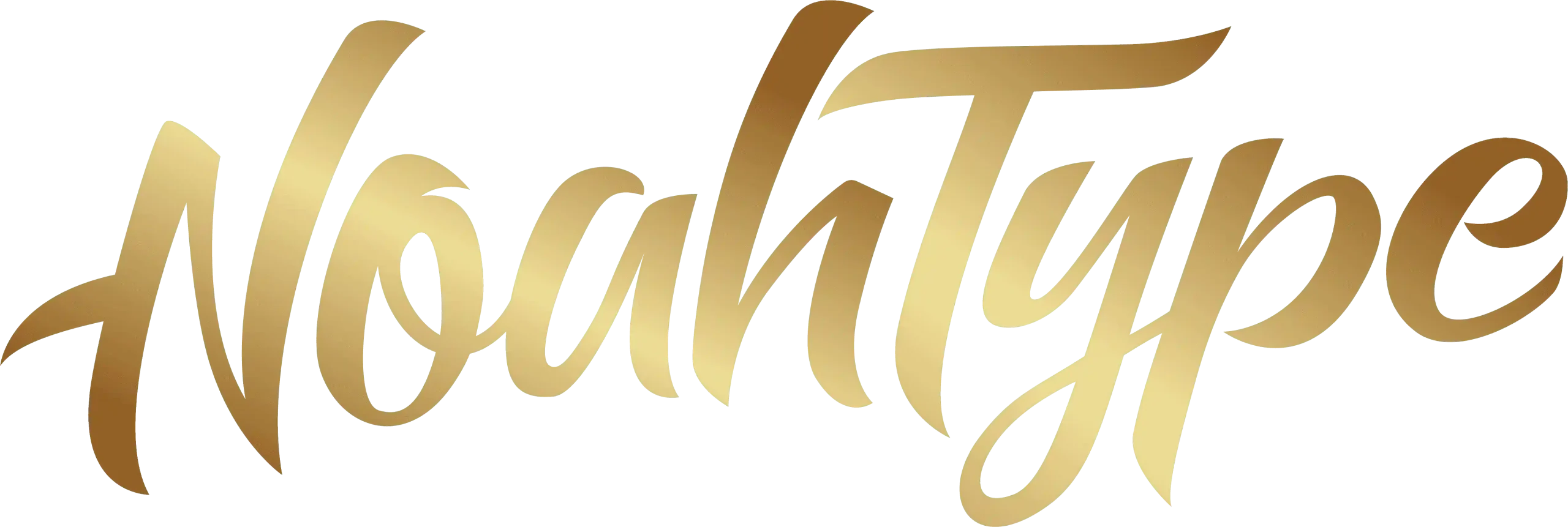How to Choose a Quote Font for Stylish and Readable Designs
Table of Contents
- Introduction: Why Quote Fonts Matter
- Legibility vs. Style: Striking the Right Balance
- Key Criteria in Choosing a Quote Font
3.1. Readability (Character Shapes, Open Counters, X-height)
3.2. Contrast & Weight (Stroke Contrast, Bold vs Regular)
3.3. Decorative Features: Swashes, Ligatures, Alternates
3.4. Pairing with Backgrounds & Layouts
3.5. Font Pairing & Hierarchy - Technical Typography Tips for Best Readability
4.1. Line Length & Measure
4.2. Line Height (Leading)
4.3. Hanging Quotes & Alignment
4.4. Avoiding Widows & Orphans
4.5. Color Contrast & Accessibility - Example Fonts from NoahType
- Use Cases & Matching Mood
- Best Practices & Common Pitfalls
- Conclusion & Action Steps
- References & Further Reading

1. Introduction: Why Quote Fonts Matter
Quote font are a powerful design element. They can inspire, provoke thought, or add a personal touch to your visuals. Whether on social media, posters, websites, or branding materials, a beautifully styled quote grabs attention.
But a stunning design means little if the message is hard to read. That’s why choosing a font for quotes should balance style and readability. A good quote font enhances the message, communicates emotion, and keeps the text accessible to every viewer.
2. Legibility vs. Style: Striking the Right Balance
Quote Font Every designer faces the challenge of balancing readability with decorative flair. A font can look striking but fail if viewers need to squint to read it.
- Legibility: How clearly individual characters are distinguished.
- Readability: How comfortably a block of text can be consumed.
The ideal quote font is expressive but still clear at different sizes and on different screens. As Smashing Magazine notes, elements like contrast, spacing, and hierarchy are crucial to ensuring legibility (Smashing Magazine).
3. Key Criteria in Choosing a Quote Font
3.1. Readability (Character Shapes, Open Counters, X-height)
- Fonts with open counters (the enclosed spaces inside “o”, “e”) improve clarity.
- A larger x-height makes lowercase letters easier to read.
- Avoid overly condensed or heavily stylized fonts for long quotes.
3.2. Contrast & Weight (Stroke Contrast, Bold vs Regular)
- Fonts with extreme thin/thick stroke contrast may look elegant but reduce readability.
- Choose fonts with multiple weights so you can use bold for emphasis and regular for longer text.
3.3. Decorative Features: Swashes, Ligatures, Alternates
- Swashes and ligatures bring charm but should be used sparingly.
- Ideal for the first letter of a word or for emphasizing key words.
- Ensure the font supports proper curly quotation marks.
3.4. Pairing with Backgrounds & Layouts
- Quotes are often placed over images or textures. Test fonts for visibility against busy backgrounds.
- Use overlays or shadows to increase contrast.
3.5. Font Pairing & Hierarchy
- Pair one decorative font with a clean serif or sans serif for the author line.
- Limit to two fonts per design to avoid clutter.
- Apply size and weight to guide the reader’s eye naturally.

4. Technical Typography Tips for Best Readability
4.1. Line Length & Measure
Keep line length between 50–75 characters per line for smooth reading.
4.2. Line Height (Leading)
Set line spacing around 1.3–1.6× the font size for breathing room.
4.3. Hanging Quotes & Alignment
Use curly quotes, and consider hanging them outside the margin for cleaner alignment.
4.4. Avoiding Widows & Orphans
Prevent single words or short lines from being stranded by adjusting spacing.
4.5. Color Contrast & Accessibility
Check text-to-background contrast ratios for accessibility (WCAG standards). Avoid low-contrast combinations.
5. Example Fonts from NoahType
Here are some NoahType fonts that work beautifully for quotes:
- Baseliner Script Font – A brush script with expressive strokes, perfect for bold and energetic quotes.
- Single Life Script Font – A monoline script with unique alternates and tails, ideal for minimalist or romantic quotes.
- Allston Modern Script Font – A smooth, elegant script suited for sophisticated or poetic messages.
- The Strange Script Font – Bold and distinctive, great for impactful, attention-grabbing quotes.
- Letterman Script Font – Modern brush script with personality, versatile for branding and creative quotes.
- Violableness Handwriting Font – Elegant handwriting with swashes and alternates, perfect for luxury or romantic contexts.
Use one decorative script for the main text and a simple serif/sans serif from NoahType for attribution or supporting text.
6. Use Cases & Matching Mood
| Use Case | Mood / Tone | Suggested Font |
|---|---|---|
| Motivational Quotes | Energetic, bold | The Strange Script |
| Romantic / Poetic Quotes | Flowing, delicate | Single Life Script or Allston |
| Luxury Branding Quotes | Elegant, high-class | Violableness Handwriting |
| Minimalist Social Media Quotes | Clean, modern | Baseliner Script paired with a sans serif |
| Artistic Statement Quotes | Distinctive, bold | Letterman Script |
7. Best Practices & Common Pitfalls
Do’s:
- Test across sizes and devices.
- Use alternates and swashes selectively.
- Adjust kerning/tracking for balance.
- Maintain font licensing compliance.
- Ensure high contrast with background colors.
Don’ts:
- Don’t overload with decorative alternates.
- Don’t use ultra-thin or ultra-bold weights for long text.
- Don’t mix more than two highly decorative fonts in a single design.

8. Conclusion & Action Steps
The best quote fonts are stylish and readable. They highlight the message without sacrificing clarity.
Next steps for designers:
- Audit your current quote designs for readability issues.
- Choose 1–2 decorative fonts from NoahType (e.g., Baseliner, Single Life, Allston) plus a supporting serif/sans serif.
- Create a mini style guide for consistent quote designs.
- Test readability with your audience before finalizing.
By following these principles, your quotes will not only look stunning but also resonate clearly with your viewers.
